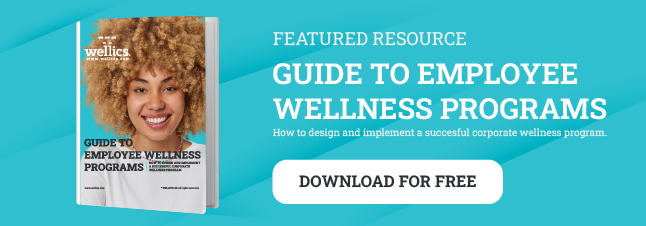Health and wellness are for everyone, including adults with disabilities However, because some types of health and wellness activities create accessibility barriers, many adults with disabilities don’t get the support they need to adopt healthier habits.
Employee wellness programs that are inclusive of adults with disabilities can see greater success and ROI of their programs by providing activities tailored to their employees with disabilities.
This guide to health and wellness activities for individuals with disabilities covers three key dimensions of health and wellness essential for adults with disabilities to thrive — fitness, diet, and mental well-being.
Health and Wellness Needs of People With Disabilities
According to the CDC, one in four US adults lives with a disability, so it’s essential to have health and wellness programs designed specifically for this population.
Among these adults experiencing disability, they are most likely to experience the following difficulties in order of most common to least common:
- Inability or serious difficulty walking or climbing stairs
- Deafness or serious difficulty hearing
- Blindness or serious difficulty seeing
- Inability or serious difficulty concentrating, remembering, or making decisions
- Inability or difficulty living independently
Due to these and other challenges, adults with disabilities are more likely to:
- Be overweight or obese
- Smoke
- Be diagnosed with heart disease or diabetes
As a result of the health risks associated with disability, it's important for those living with disabilities to take steps to improve their health and well-being and prevent chronic disease. Personalized health and wellness programming can help address the unique healthcare needs of adults with disabilities.
Types of Wellness Activities for Adults With Disabilities
All adults need to stay physically active, eat healthily, keep stress levels to a minimum, and practice a healthy lifestyle. Adults with disabilities face certain obstacles that can make maintaining or improving health and well-being more challenging.
Below are some of the top ways for adults with disabilities to stay active, eat well, and live a healthier life.
1. Exercise and Physical Activities
All adults, regardless of ability, need 150 minutes of moderate-intensity exercise weekly. How exercise is obtained is up to the person and their interests and ability levels. However, because of physical, emotional, or cognitive barriers, many adults with disabilities don’t get sufficient physical activity.
Below are some examples of physical activities for adults with disabilities:
- Walking
- Gardening
- Swimming
- Dancing
- Yoga
- Wheelchair-accessible activities and sports
The CDC recommends starting out with a small amount of exercise at a time and building up to longer sessions to build momentum and prevent injury.
In addition to getting enough cardio exercise, adults also need to incorporate strength building into their routine. There are many modifications that can be made to help adults with disabilities perform strength training exercises.
For those interested in exercising or working out from the comfort of home, the National Center on Health, Physical Activity and Disability (NCHPAD) offers a collection of free exercise-from-home videos. Activities include cardio and strength building, as well as flexibility and coordination exercises, giving viewers a well-rounded exercise plan.
2. Diet and Nutrition Activities
Physical activity is one pillar of health and wellness. Healthy eating is just as essential. Since adults with disabilities are more likely to be overweight or obese than the general population, adopting healthy dietary habits can be a vital intervention in promoting longevity and well-being.
According to the NCHPAD, some of the ways to improve healthy eating and nutrition among adults with disabilities include:
- Healthy swaps — Choose dietary substitutions that replace unhealthy foods with nutrient-dense alternatives
- Fruits and veggies challenge — Follow a list of top fruit and vegetable choices and ways to experiment with adding more to your diet
- Food label education — Learn how to read nutrition facts labels and make informed dietary choices
- Nutrition apps — Use smartphone apps to keep track of nutritional intake, weight changes, and overall food choices
Many diet and nutrition programs don’t take into consideration the unique caloric requirements of people with disabilities. Always consult a registered dietician to get a personalized diet plan with appropriate caloric recommendations.
3. Mental Health Activities
People who exercise more tend to eat healthier and experience less mental distress. They also tend to sleep better. If any one of these pillars of wellness is disrupted, the others suffer. That’s why mental well-being is vital to overall health for all adults, but especially those who face barriers to proper exercise, nutrition, and sleep.
According to the CDC, adults with disabilities report feeling mental distress five times as often as adults without disabilities. Adults with disabilities may cope with stress differently or have heightened stress responses.
To help adults with disabilities manage stress, the CDC recommends the following wellness activities for mental health:
- Make time for activities that help you unwind, such as listening to music, painting, or reading
- Practicing relaxation techniques, such as deep breathing, mindfulness, or gentle stretching
- Maintaining social connections, including chatting regularly with loved ones
- Connecting with community and faith-based groups that provide support
Since mental health conditions like depression and anxiety can be disabilities in themselves, it’s important for adults to get professional support for chronic symptoms from clinical counselors, psychologists, or psychiatrists.
Employee Wellness for Adults With Disabilities
Employee wellness programs that tailor programming to adults with disabilities can help address the challenges this group faces. For example, adults with disabilities are less likely to get routine check-ups or have a primary care provider and are more likely to have unmet healthcare needs due to cost.
Employers can help foster a culture of proactive healthcare among workers with disabilities by providing them with access to a corporate wellness platform where they can monitor their own physical activity, nutrition, sleep, and mental well-being. With wellness programs, employers can provide employees with the tools to track health statuses and set reminders for check-ups. Additional healthcare benefits programs connect employees with care providers and cover the cost of unmet healthcare needs.
Make your employee wellness program work for everyone on your team. Choose Wellics' wellness platform to inspire every employee to take charge of their health journey. With Wellics, employees receive ongoing education about different aspects of health, including fitness and nutrition. With wearable device integrations and custom metrics tracking, employees can take a hands-on approach to their personal health. Learn more about how the Wellics employee wellness program can work for your organization.
Originally published July 26, 2022 - 6:29 AM, updated September 11, 2024
Sources
- https://www.cdc.gov/ncbddd/disabilityandhealth/features/physical-activity-for-all.html
- https://www.cdc.gov/ncbddd/disabilityandhealth/infographic-disability-impacts-all.html
- https://www.mayoclinic.org/medical-professionals/physical-medicine-rehabilitation/news/strength-training-for-people-with-disabilities/mac-20514568
- https://www.youtube.com/playlist?list=PLwMObYmlSHaN0Pbu2xXymDUePlsTCsn7n
- https://www.cdc.gov/ncbddd/disabilityandhealth/features/mental-health-for-all.html










